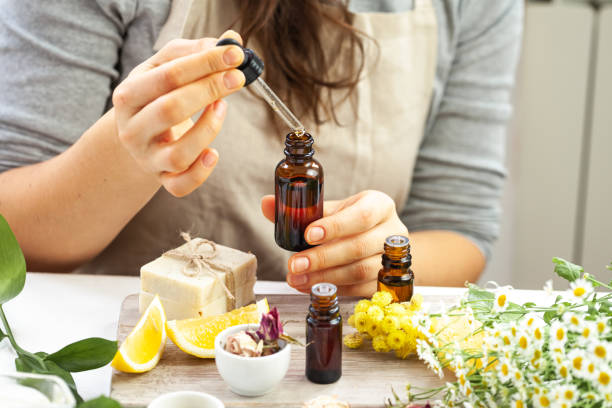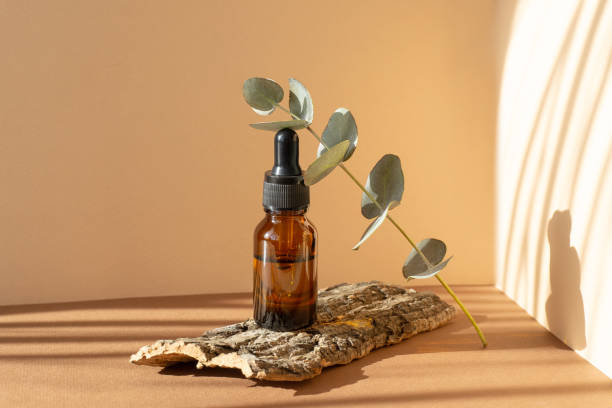Many people like to use essential oils, but do you know the difference between natural essential oils and ordinary essential oils? How should we distinguish between natural essential oils and ordinary essential oils?
The main difference between natural essential oils and regular essential oils is their origin and preparation method. Here are the key differences between the two:

1. Source:
- Natural essential oils: Natural essential oils are extracted from natural plant materials such as trees, flowers, leaves, fruits, seeds, etc. They are usually all-natural and contain no synthetic ingredients.
- Common essential oils: Common essential oils may be natural or synthetic. Synthetic essential oils are typically created in a laboratory using chemical ingredients rather than being extracted from natural plants.
2. Preparation method:
- Natural essential oils: Natural essential oils are usually extracted from plants through natural methods such as distillation, cold pressing or solvent extraction. These methods preserve the natural characteristics and smell of plant raw materials.
- Common essential oils: The synthetic ingredients in common essential oils are usually prepared through chemical reactions. The ingredients may be similar to those of natural plants, but they are not extracted directly from the plants.
3. Ingredients:
-Natural essential oils: The components of natural essential oils are complex mixtures from the plants themselves, including volatile compounds, esters, alcohols, phenols, etc. These ingredients often have the plant's unique smell and medicinal properties.
- Ordinary essential oils: The synthetic ingredients in ordinary essential oils can be artificially prepared. Their composition and properties may be similar to natural essential oils, but they usually do not have the exact same smell and therapeutic effects as natural essential oils.
4. Purity and Quality:
- Natural essential oils: Since they are extracted from natural plants, the purity and quality depend on the extraction method and the quality of the raw materials. High-quality natural essential oils are generally more expensive, but often have more natural healing properties and scents.
- Common Essential Oils: The quality and purity of common essential oils can vary depending on the manufacturer and brand. Some common essential oils may contain synthetic additives, while others may have the properties of natural essential oils.

Overall, natural essential oils are generally considered to be purer, more organic, and have more natural healing properties and scents, and are therefore widely used in many aromatherapy, massage, and skin care applications. However, regular essential oils also have their uses, especially in perfume and fragrance manufacturing, as they can provide a consistent scent and are often less expensive. No matter which type of essential oil you choose, you should carefully review the product label to learn about its ingredients and preparation methods to ensure it meets your needs.
It is important to judge the purity and quality of natural essential oils because they are often used for massage, aromatherapy, skin care, and other health purposes. Here are some ways to help you identify natural essential oils:
1. Check the ingredient label: The ingredient label for natural essential oils should clearly list the single ingredient, which is the botanical name of the essential oil. If the label contains other ingredients or additives, it may not be a pure essential oil.
2. Smell: Pure natural essential oils should have a strong and natural scent consistent with their plant origin. If the smell seems too weak or artificial, it may be a shoddy product.
3. Color: Many natural essential oils have a specific color, but not all. Some essential oils such as lavender oil are usually lavender in color and lemon oil is yellow in color. However, color itself is not the only criterion for judging purity, as some essential oils may vary in color.
4. Density: Pure natural essential oils are usually more concentrated than water and therefore have a higher density. You can make a preliminary judgment by placing a drop of essential oil on white paper and observing whether it penetrates quickly or leaves oil stains.

5. Test solubility: Natural essential oils can usually be dissolved in alcohol, vegetable oils or fats. If you mix a few drops of essential oil with some alcohol, they should blend evenly rather than separate.
6. Supplier Reputation: Purchasing natural essential oils from reputable suppliers is one way to ensure quality. They will often provide detailed information about the product, including botanical name, origin, and extraction method.
7. Price: While higher prices don’t necessarily indicate better quality, essential oils that are too cheap may be fake. The production of natural essential oils requires a large amount of raw materials, so the cost is relatively high.
8. Batch numbers and test reports: Some suppliers provide batch numbers and independent test reports for essential oils, which can show the composition and quality of the oil. Checking this information can help you confirm the authenticity of the product.
In summary, when purchasing natural essential oils, carefully review product information, ingredient labels, and choose a reputable supplier. If you have doubts about the authenticity of an essential oil, you can consult a professional essential oil practitioner or seek an independent test report to verify its purity.
Post time: Sep-27-2023

